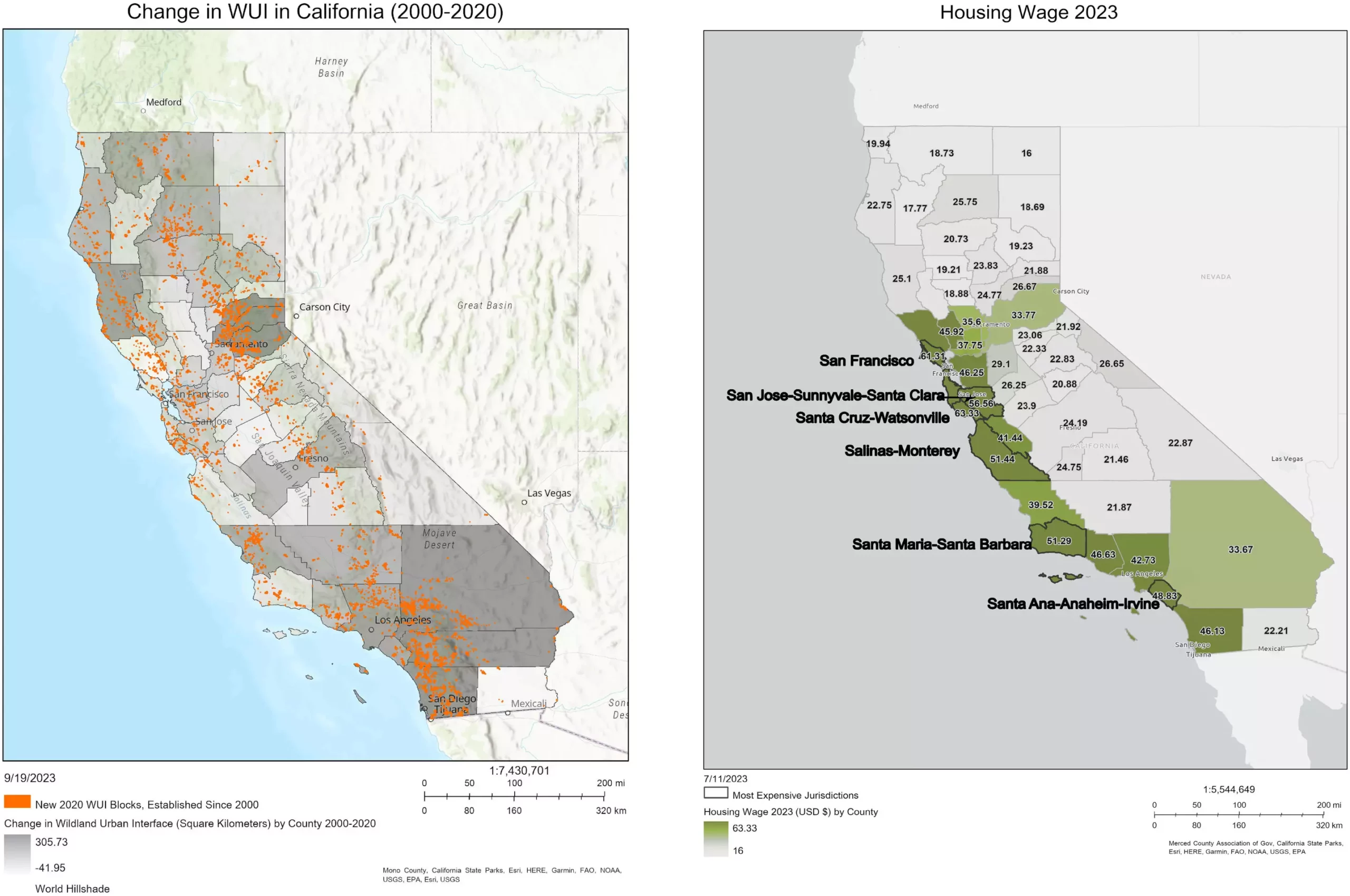The intersection of affordable housing and climate change is becoming increasingly critical, particularly in California, where urban growth is merging dangerously with wildland areas. Researchers from UC Santa Cruz have recently published an article in the *Proceedings of the National Academy of Sciences* that explores this intricate relationship, particularly focusing on the Wildland-Urban Interface (WUI). In this scenario, residents often find themselves at high risk for climate-related disasters, such as wildfires and floods, as urban development encroaches on natural landscapes. By understanding the dynamics at play, this research aims to shed light on how housing crises could be exacerbating the effects of climate change.
Since the 1990s, California has witnessed a substantial rise in WUI development, with over a third of households now situated adjacent to or within these vulnerable areas. This statistic underscores a troubling trend wherein regions historically separated by urban and natural environments are becoming increasingly intertwined. The development of WUI areas not only raises the risk of natural disasters but also has dire implications for wildlife habitats, commuting patterns, and greenhouse gas emissions. By examining these dynamics, researchers aim to grasp the implications of housing development on both communities and the environment.
Miriam Greenberg, a sociology professor at UC Santa Cruz and the lead author of the study, emphasizes the lack of thorough understanding regarding the motivations behind WUI expansion. While previous analyses have predominantly centered on natural systems, this study seeks to incorporate social dynamics, particularly the impact of California’s intense housing crisis. Greenberg states, “You can’t extricate environmental dynamics from urban and housing dynamics; they are interwoven.” Thus, she and her team intend to use a mixed-methods approach, engaging with surveys, ethnographic interviews, and integrating various datasets to obtain a holistic view of WUI dynamics.
Greenberg highlights that California stands out for experiencing dual crises: a marked housing shortage and extensive WUI growth. The implications of this dual crisis become crucial in understanding the motivations driving individuals to relocate to these areas, where they are often at heightened risk for disasters fueled by climate change.
The research team is actively investigating several key predictions regarding trends in WUI areas. One prediction posits a significant shift in the motivations for individuals relocating to these regions. Historically, many sought proximity to nature due to generational roots or a desire for a lifestyle in nature. In contrast, current trends reveal that housing affordability has emerged as the primary factor attracting people to WUI areas, particularly as worsening market conditions continue to push individuals and families out of urban centers.
The researchers anticipate that the demographic landscape of the WUI will be distinctive depending on location, informed by a blend of political, economic, and environmental contexts. For instance, more urban-adjacent WUI developments may cater predominantly to middle-income commuters, while remote areas may showcase stark socio-economic contrasts, hosting affluent estates alongside older homes and makeshift living arrangements.
A pressing concern raised by the research is the widening gap in inequality within WUI communities. While all residents share a common vulnerability to climate-related disasters, disparities in wealth, resources, and knowledge of local ecosystems can lead to vastly different experiences during crises. The study suggests that lower-income families, who often settle in WUI areas due to affordability, may suffer disproportionately when faced with environmental hazards. This insight underscores the necessity of addressing the housing crisis not merely as a social issue, but as a pivotal sustainability challenge requiring urgent attention.
The authors assert that tackling the intertwined issues of affordable housing and climate vulnerability necessitates an integrated approach to policy and planning across multiple levels of governance. Solutions should prioritize the production and preservation of affordable housing, while simultaneously safeguarding urban environments against climate change impacts. Associate Professor Hillary Angelo emphasizes the need to expand conversations around urban sustainability, arguing that the ramifications of inadequate housing extend beyond city limits, triggering adverse social and environmental consequences.
The collaborative work between University of California campuses and diverse community stakeholders seeks to illuminate the pathways toward sustainable frameworks that balance human habitation with ecological safeguarding. As California serves as a “living laboratory” for these issues, the findings of this upcoming research hold promise for defining effective strategies to counteract the growing disparity of risk that climate change presents to vulnerable populations. Understanding these relationships is integral not only for California but also for other urbanized regions facing similar challenges worldwide.


Leave a Reply